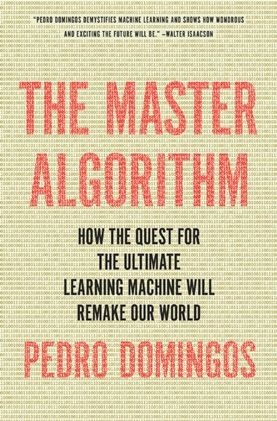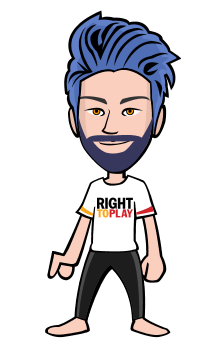
Excerpted with permission from The Master Algorithm: How the Quest for the Ultimate Learning Machine Will Remake Our World, by Pedro Domingos. Available from Basic Books, a member of The Perseus Books Group. Copyright © 2015.
Why is Google worth so much more than Yahoo? They both make their money from showing ads on the web, and they’re both top destinations. Both use auctions to sell ads and machine learning to predict how likely a user is to click on an ad (the higher the probability, the more valuable the ad). But Google’s learning algorithms are much better than Yahoo’s. This is not the only reason for the difference in their market caps, of course, but it’s a big one. Every predicted click that doesn’t happen is a wasted opportunity for the advertiser and lost revenue for the website. With Google’s annual revenue of $50 billion, every 1 percent improvement in click prediction potentially means another half billion dollars in the bank, every year, for the company. No wonder Google is a big fan of machine learning, and Yahoo and others are trying hard to catch up.
Web advertising is just one manifestation of a much larger phenomenon. In every market, producers and consumers need to connect before a transaction can happen. In pre-Internet days, the main obstacles to this were physical. You could only buy books from your local bookstore, and your local bookstore had limited shelf space. But when you can download any book to your e-reader any time, the problem becomes the overwhelming number of choices. How do you browse the shelves of a bookstore that has millions of titles for sale? The same goes for other information goods: videos, music, news, tweets, blogs, plain old web pages. It also goes for every product and service that can be procured remotely: shoes, flowers, gadgets, hotel rooms, tutoring, investments. It even applies to people looking for a job or a date. How do you find each other? This is the defining problem of the Information Age, and machine learning is a big part of the solution.
As companies grow, they go through three phases. First, they do everything manually: the owners of a mom-and-pop store personally know their customers, and they order, display, and recommend items accordingly. This is nice, but it doesn’t scale. In the second and least happy phase, the company grows large enough that it needs to use computers. In come the programmers, consultants, and database managers, and millions of lines of code get written to automate all the functions of the company that can be automated. Many more people are served, but not as well: decisions are made based on coarse demographic categories, and computer programs are too rigid to match humans’ infinite versatility.
After a point, there just aren’t enough programmers and consultants to do all that’s needed, and the company inevitably turns to machine learning. Amazon can’t neatly encode the tastes of all its customers in a computer program, and Facebook doesn’t know how to write a program that will choose the best updates to show to each of its users. Walmart sells millions of products and has billions of choices to make every day; if the programmers at Walmart tried to write a program to make all of them, they would never be done. Instead, what these companies do is turn learning algorithms loose on the mountains of data they’ve accumulated and let them divine what customers want.
Learning algorithms are the matchmakers: they find producers and consumers for each other, cutting through the information overload. If they’re smart enough, you get the best of both worlds: the vast choice and low cost of the large scale, with the personalized touch of the small. Learners are not perfect, and the last step of the decision is usually still for humans to make, but learners intelligently reduce the choices to something a human can manage.
In retrospect, we can see that the progression from computers to the Internet to machine learning was inevitable: computers enable the Internet, which creates a flood of data and the problem of limitless choice; and machine learning uses the flood of data to help solve the limitless choice problem. The Internet by itself is not enough to move demand from “one size fits all” to the long tail of infinite variety. Netflix may have one hundred thousand DVD titles in stock, but if customers don’t know how to find the ones they like, they will default to choosing the hits. It’s only when Netflix has a learning algorithm to figure out your tastes and recommend DVDs that the long tail really takes off.
Once the inevitable happens and learning algorithms become the middlemen, power becomes concentrated in them. Google’s algorithms largely determine what information you find, Amazon’s what products you buy, and Match.com’s who you date. The last mile is still yours—choosing from among the options the algorithms present you with—but 99.9 percent of the selection was done by them. The success or failure of a company now depends on how much the learners like its products, and the success of a whole economy—whether everyone gets the best products for their needs at the best price—depends on how good the learners are.
The best way for a company to ensure that learners like its products is to run them itself. Whoever has the best algorithms and the most data wins. A new type of network effect takes hold: whoever has the most customers accumulates the most data, learns the best models, wins the most new customers, and so on in a virtuous circle (or a vicious one, if you’re the competition). Switching from Google to Bing may be easier than switching from Windows to Mac, but in practice you don’t because Google, with its head start and larger market share, knows better what you want, even if Bing’s technology is just as good. And pity a new entrant into the search business, starting with zero data against engines with over a decade of learning behind them.
You might think that after a while more data is just more of the same, but that saturation point is nowhere in sight. The long tail keeps going. If you look at the recommendations Amazon or Netflix gives you, it’s clear they’re still very crude, and Google’s search results still leave a lot to be desired. Every feature of a product, every corner of a website can potentially be improved using machine learning. Should the link at the bottom of a page be red or blue? Try them both and see which one gets the most clicks. Better still, keep the learners running and continuously adjust all aspects of the website.
The same dynamic happens in any market where there’s lots of choice and lots of data. The race is on, and whoever learns fastest wins. It doesn’t stop with understanding customers better: companies can apply machine learning to every aspect of their operations, provided data is available, and data is pouring in from computers, communication devices, and ever-cheaper and more ubiquitous sensors. “Data is the new oil” is a popular refrain, and as with oil, refining it is big business. IBM, as well plugged into the corporate world as anyone, has organized its growth strategy around providing analytics to companies. Businesses look at data as a strategic asset: What data do I have that my competitors don’t? How can I take advantage of it? What data do my competitors have that I don’t?
In the same way that a bank without databases can’t compete with a bank that has them, a company without machine learning can’t keep up with one that uses it. While the first company’s experts write a thousand rules to predict what its customers want, the second company’s algorithms learn billions of rules, a whole set of them for each individual customer. It’s about as fair as spears against machine guns. Machine learning is a cool new technology, but that’s not why businesses embrace it. They embrace it because they have no choice.



